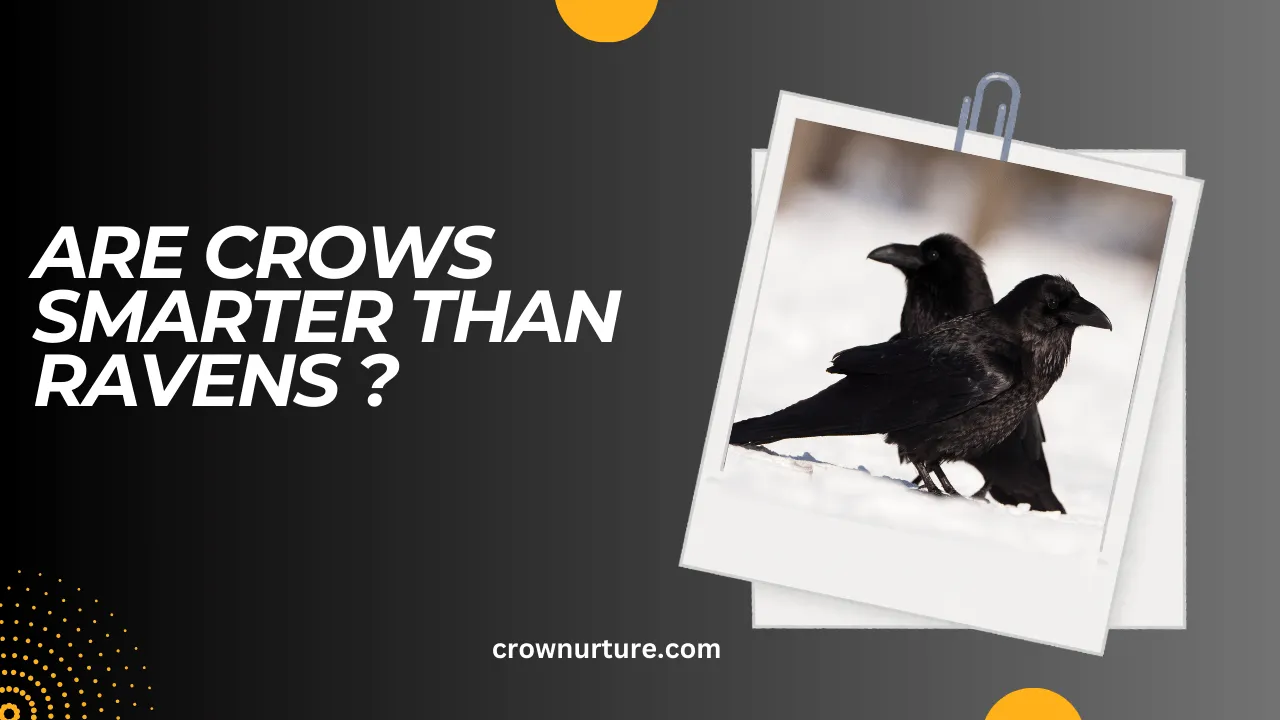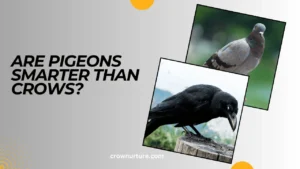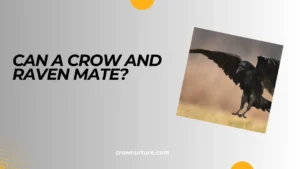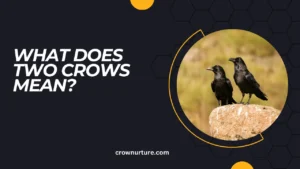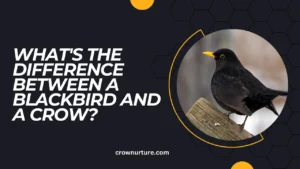Crows and ravens—two birds that share the same family tree yet seem locked in a silent competition for the title of “the smartest bird.”
Both species boast remarkable problem-solving skills, an uncanny ability to communicate, and memories that rival those of many mammals. But which one truly takes the crown when it comes to intelligence?
Understanding the differences between these avian geniuses isn’t just a matter of curiosity; it’s an exploration into the complex minds of animals we often overlook. Are their problem-solving skills comparable?
Does one species outshine the other in social intelligence or memory? Uncovering these nuances can help us appreciate the intelligence of the natural world.
This article dives into the fascinating world of crows and ravens, breaking down their cognitive abilities, social structures, and unique behaviors to see if one bird truly surpasses the other in intelligence. By the end, you might find yourself seeing these birds in a completely new light.
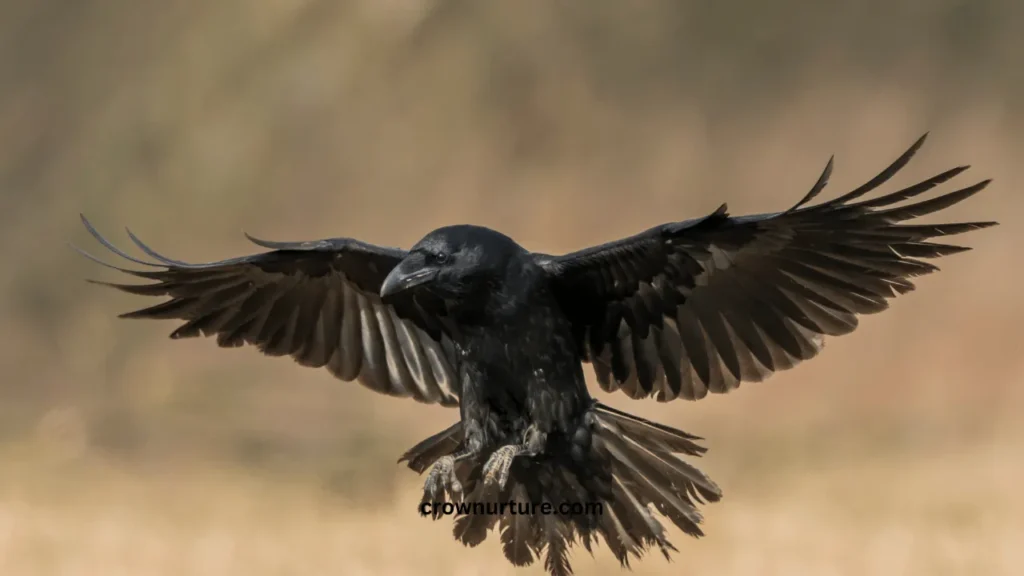
Contents
1. Cognitive Abilities: A General Overview
Both crows and ravens belong to the Corvidae family, a group known for its exceptional cognitive abilities. These birds are often compared to primates in terms of problem-solving skills and innovation.
When it comes to brain size, ravens tend to have slightly larger brains relative to their body size compared to crows. However, the brain-to-body ratio of both species is extraordinarily high, surpassing many mammals.
This ratio, combined with a dense concentration of neurons, makes them capable of advanced reasoning.
Neurologically, crows and ravens share a complex brain structure, particularly in the nidopallium caudolaterale, an area linked to intelligence.
This region allows both species to plan, reason, and even display emotions, demonstrating their highly evolved minds.
2. Problem-Solving Skills
The ability to solve problems is one of the most striking traits of both crows and ravens.
- Tool Use: Crows are famous for their ingenious use of tools. For instance, New Caledonian crows craft hooks from twigs to extract insects from tree bark. Ravens, on the other hand, have been observed using sticks to defend food caches from intruders.
- Innovative Solutions: Both species excel in devising creative solutions. Crows in Japan, for example, drop nuts onto busy streets and wait for cars to crack them open. Similarly, ravens have been seen working in pairs to distract predators while stealing food.
- Causal Reasoning: Ravens seem to excel in understanding cause-and-effect relationships, often outperforming crows in experiments that require reasoning about hidden mechanisms or abstract concepts.
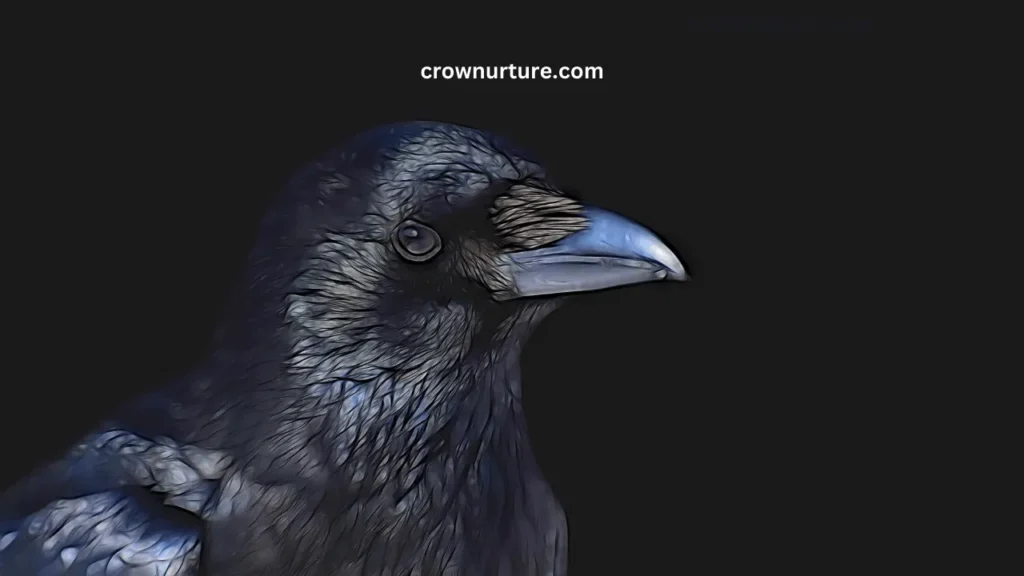
3. Social Intelligence
The social structures of crows and ravens are equally complex, offering a glimpse into their advanced intelligence.
- Complex Social Structures: Crows often live in large, tight-knit groups called murders. They cooperate in foraging, share information about dangers, and even engage in communal roosting. Ravens, on the other hand, form looser social groups but are known for their ability to form alliances and manipulate social dynamics.
- Communication: Both species have rich vocal repertoires and use body language to communicate. Crows can mimic human speech and other sounds, while ravens are known for their deep, resonant calls that can convey detailed messages.
- Social Learning: Crows teach each other about threats, passing on knowledge across generations. Ravens, too, learn from observing their peers, such as figuring out how to access food by watching others solve puzzles.
4. Memory and Learning
Memory is another area where crows and ravens shine, helping them adapt to their environments and retain valuable knowledge.
- Spatial Memory: Crows have remarkable spatial memory, which they use to cache food in hundreds of hidden locations. They remember these spots for months and even move their caches if they suspect they’re being watched.
- Long-Term Memory: Ravens also have excellent long-term memory. They can remember specific humans who have been kind—or unkind—to them, adjusting their behavior accordingly.
- Learning New Tasks: Both species are quick learners, mastering new tasks like unlocking mechanisms or recognizing human faces in experimental setups. Their adaptability underscores their cognitive flexibility.
5. The Debate: Crow vs. Raven
Determining whether crows or ravens are smarter ultimately depends on the criteria used.
- Similarities and Differences: Both birds exhibit similar levels of intelligence in many areas, including problem-solving and social learning. However, ravens may have an edge in abstract reasoning, while crows often outshine in cooperative tasks.
- Ecological Factors: The environments these birds inhabit influence their cognitive skills. Ravens, often found in more solitary and rugged environments, rely on strategic planning. Crows, living closer to humans, excel at adapting to urban challenges.
- Individual Variation: Just like humans, individual birds show varying levels of intelligence. Some crows or ravens may be exceptionally bright, while others display more average cognitive abilities.
Conclusion
When it comes to intelligence, crows and ravens are both in a league of their own, rivaling even some mammals in their cognitive abilities. Their problem-solving skills, social intelligence, and memory capabilities showcase the brilliance of avian minds.
The question of whether crows are smarter than ravens doesn’t have a definitive answer. Each bird excels in specific areas—ravens in reasoning and strategy, and crows in cooperation and adaptability. Ultimately, the “smarter” bird depends on the task at hand and the environment they navigate.
By appreciating the unique strengths of both species, we can better understand the complexities of animal intelligence and marvel at the natural world’s ingenuity.
FAQs
Yes, both belong to the Corvidae family, which also includes magpies and jays.
2. Do crows and ravens interact in the wild?
Occasionally, but they often compete for resources and may avoid each other.
3. Which bird is better at solving puzzles?
Both are exceptional, but ravens tend to excel in abstract reasoning tasks.
4. Can crows and ravens recognize humans?
Yes, both species can recognize individual humans and remember them for years.
5. Do crows or ravens mimic sounds better?
Ravens are better mimics, capable of replicating a wider range of sounds, including human speech.
Crows are generally more social, living in large groups, while ravens are more solitary.

